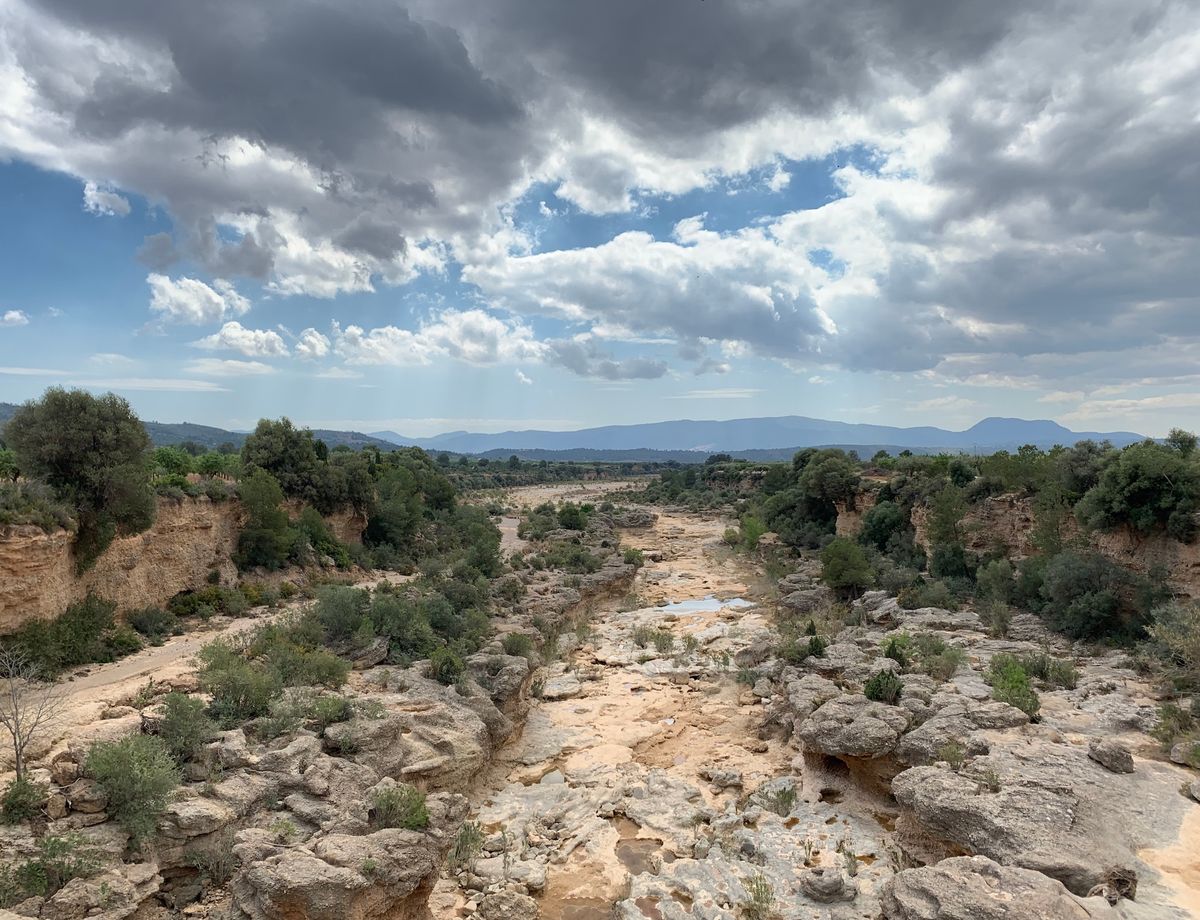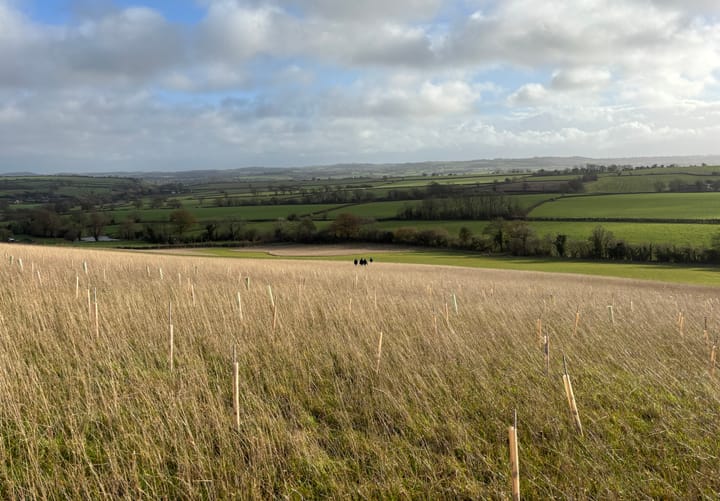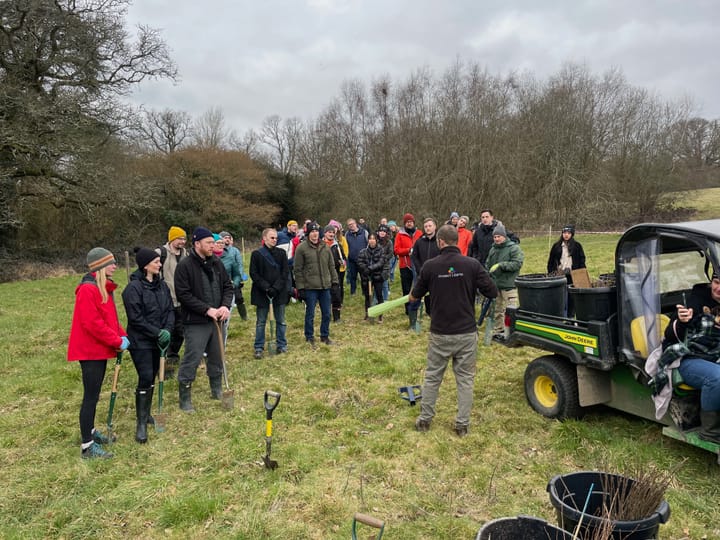Seeing the effects of Climate Change first hand, by bike

At the start of 2019 everything was going wrong. I was working a job I hated in New York, trapped there by my visa, concerned about moving home to a very divided UK. Eventually, I built up the courage to quit the job, sold everything I owned, gave my turtle to a friend, and jumped on a flight to the Canary Islands to live a hermit life of cycling up and down volcanoes until the burnout subsided.
I started in Gran Canaria, riding my bike to every corner, and over every mountain. Every few miles you feel like you’re in a totally different country, with the geology, scenery, and ecosystem seeming totally different. The one consistency wherever I went was deforestation. Everywhere you look the land is scarred, with bare, dry, eroded soil, broken up by a little bush here and the odd tree there. Heading over to Tenerife was a similar story, with certain areas partially reforested, but mostly barren. Some of this is due to lava flow, but most of it is due to logging since pre-colonial times. I looked up the stats and Gran Canaria was down to 35% forest coverage, and Tenerife was down to 20%. There are ongoing efforts to reforest, but the status is Critical/Endangered.

After the Canary Islands I took the ferry to the south of Spain, and for days I was riding through wine country. That might conjure up a beautiful almost mystical image in your head, but the reality was riding headfirst into brutally strong headwinds, choking on dust, and dodging tumbleweeds.

After spending April riding through the desert in Spain, I headed north through the Pyrenees to Andorra, France, and Germany. I aimed for national parks, areas of outstanding beauty, rivers and generally the greenest bits of the map I could find, but everywhere I went there were way more trees being cut down than being planted. I’d see acres of stumps, then a handful of plastic chutes protecting nowhere near enough saplings. Even the Black Forest was heavily logged, mostly agricultural, and despite the name there was far more agriculture than forest. It was a similar situation throughout Switzerland and Liechtenstein too.
The places you think of as being remote, beautiful and untouched are full of people, cars, trains, hotels, casinos, farmland, and occasional patches of woodland. Even when I tried to avoid towns and get on gravel backcountry trails, deforestation was everywhere.

After two months of seeing the same story over and over, I started thinking about a lot of things, and it got me wondering about my carbon footprint. Living on a bike you’d think my carbon footprint was pretty low, but I did some maths and it was still awful. The average American pumps 14.2 tonnes of CO2 into the air annually. This is 2,650lb a month, or 87lb a day. In contrast, bike tour life creates 40lb a day from hotels and another 15lb a day from meals (source), which is about 1,650lb a month.

Skipping red meat and camping in farmers fields on the weekend meant I got my footprint down to about 1,200lb a month, but I needed a way to offset the rest. That’s when I found out some fellow-Bristolians were on the job: a project called Ecologi!
I set up a monthly subscription immediately, but I wanted to do more. I’ve done a lot of charity rides in the past, and figured that’s what I needed, a fundraiser page! After a few nags to the Ecologi crew, they added the Gift button to profiles. This let me share links to my profile and gather donations from anyone, so I got to work telling people about it. When you’re touring around people want to know what you’re doing, and raising awareness for the climate crisis really struck a chord with people.
Donations started to come in from Twitter, my cycling blog, coworkers, family, friends, and even strangers on the road. A truck driver in Bosnia buys me a lemonade? That’s 20 trees. A bike shop in Serbia replaces my shifter cables, cable housing, cleans the whole thing and refuses payment? 200 trees. Sleep in a farmers field in Denmark without the farmer shouting at me? 500 trees. A stranger south of Dublin hosts me for the night, feeds me dinner and pumps me full of Irish cider? 1,000 trees!

I wasn’t running around shaking a collection jar at anyone, people were offering donations. Everyone I spoke to throughout the summer was freaking out about how hot it was. The news was talking about a 42C heatwave in France, but east Europe was sustaining similar temperatures for weeks at a time. Everyone was scared and confused.
For many people, 2019 was the year where it became utterly obvious how serious the climate crisis has become. In many developed countries many folks have got away with not noticing, they drive to work with the AC on, sit in a nice office where the AC is cranked up to 11, and go home when the sun is lower in the sky, but less developed countries are being disproportionately devastated by the temperatures. It’s almost impossible to ignore.
“It’s never normally like this.”
“I’ve never seen anything like it.”
“I don’t know how to cool down.”
“What if every summer is like this one?!”
I met some locals in Croatia walking down the road, surprised by the heatwave who were out of water. All of this confirms this is not just a case of “Phil cycles in a hot place and complains that it was hot”…
Motivations for Donations
The most donations would come in when I was struggling, and I was struggling a lot. Hungary, Bosnia, Serbia, Croatia, Montenegro, and Albania are not ideal places to be when it’s 38-42C every day and you’ve got distance to cover.
I was trying to hit the road early, but even by 9am the temperature was hot enough that I’d be hiding under trees every couple of miles. In Slovakia it was still hot as hell at 11pm, making it too hot to camp in the bivy bag. Doing 40-50mi a day in time to get to the hotel and start remote working was rough. Heat exhaustion was getting me most days for two months, and it elevated to heat stroke twice. I’d get in the sea regularly, not minding the salty feeling because I was covered in salt from my own sweat. I’d be stuck at a border crossing, heat radiating off the tarmac, unable to go anywhere for an hour. I’d hide in the shade of a nearby minivan or car, and now and then the drivers would take pity on me and give me some water, or a little ice coffee.
One day in Hungary it was 42C, and I’d been pushing hard to get through some tree-less shade-less farmland. At one point I was so dizzy and messed up I recognised hyponatremia setting in (losing so much salt you feel drunk) and had to get under a water pump for a while.
A post shared by Phil Sturgeon (@philsturgeon) on Jul 16, 2019 at 1:50am PDT
Getting donations for being in peril made me push through some situations I probably should have turned away from. Albania almost killed me off, and it was so hot various bike components were melting and others were drying out. I ended up with a serious bout of hyponatremia, and despite being desperate for sleep that night I was attacked by mosquitos in my hotel room so badly for hours that I resorted to setting up my tent in their garden at 3am…

After a few more incidents in Albania I jumped on a ferry to Italy to ride north, but it was just as hot there. I ran out of backup water one day, drank my emergency juicebox, then found myself so desperate for water I pushed through my arachnophobia to blackberry pick in bushes covered in giant spiders.

In Autumn I was riding around cooler climates in Scandinavia, and people following the story online were suddenly drastically less forthcoming with donations. Then an injury put me out of the game for two months. I had to find other ways to fund trees. I sold off an old bike for 5,000 trees and cycled it 300mi from Bristol, England to the new buyer in Paris once my injury was gone. That approach doesn’t scale, but it felt good to be contributing again.
That winter I cycled through floods all over Europe. England, Wales and Ireland all had an uncharacteristic amount of rain, even getting hit by Extra-Tropical Storm Sebastian. I was in Ireland when the storm passed through, and despite being an amazing 46mph tailwind, the rain was horrendous. Huge chunks of the British Isles were devastated from floods.

This got the donations started up again. It seems like peril is the main motivator for people to donate. The effects of the climate crisis are ramping up everywhere and there is no shortage of peril, so this is good for fundraising but terrible and terrifying in every other way. A friend in Portugal just had his house submerged in a “300 year flood”, so I’m going to swing by there and see if I can help the guy out.
Hopefully enough people will notice how screwed so many things are, elect some people who are dedicated to immediate extreme measures, and efforts can be made to start slowing and eventually reversing this crisis. In the meantime, all I can think about is:
- Reducing my footprint
- Funding reforestation
- Spreading the word about Ecologi
You don’t need to go on a crazy solo awareness raising cycling trip around Europe, nor do you need to have a large social media following. If all of you reading this article signed up 5 mates, you’d not only have more sparkly trees in your forest, but we’d have thousands more people going carbon neutral which would be massively more impactful than my fundraising.
If you’re ever thinking “what else can I do?”, I’ve been putting together a bunch of ideas with the help of some friends over github.com/philsturgeon/awesome-earth/. Think of it as Yellow Pages for Climate Action. Everyone can go there and find a few things to improve their carbon footprint and their climate impact.



Comments ()